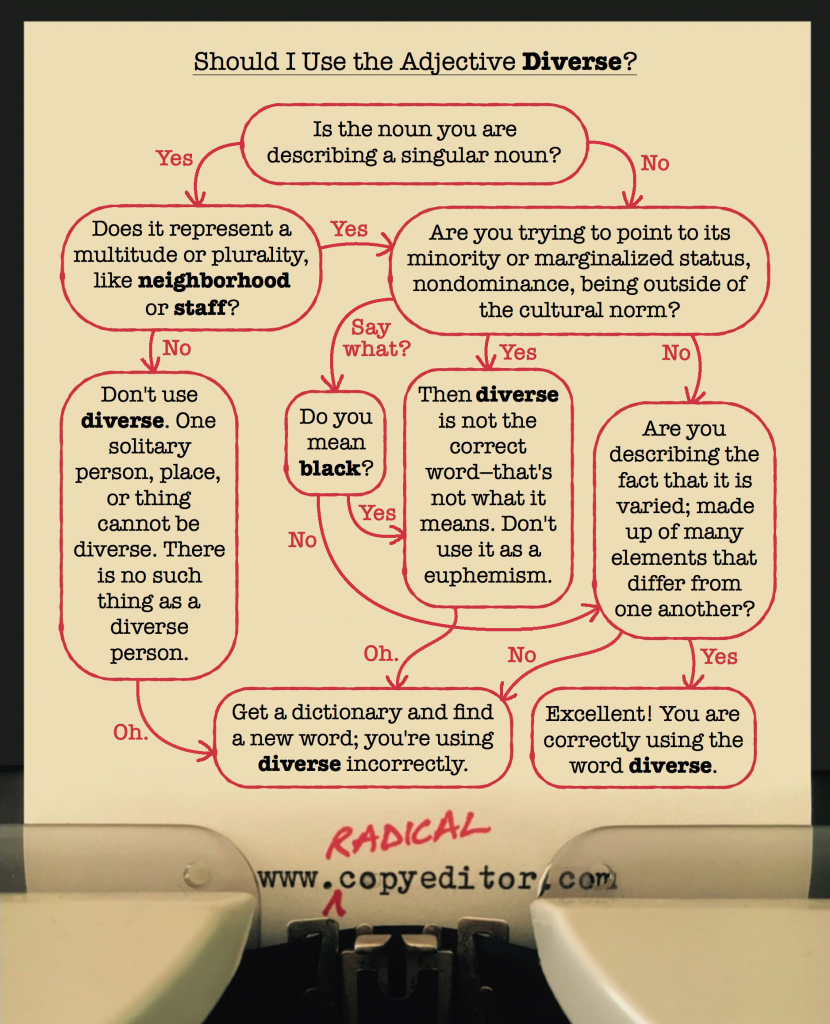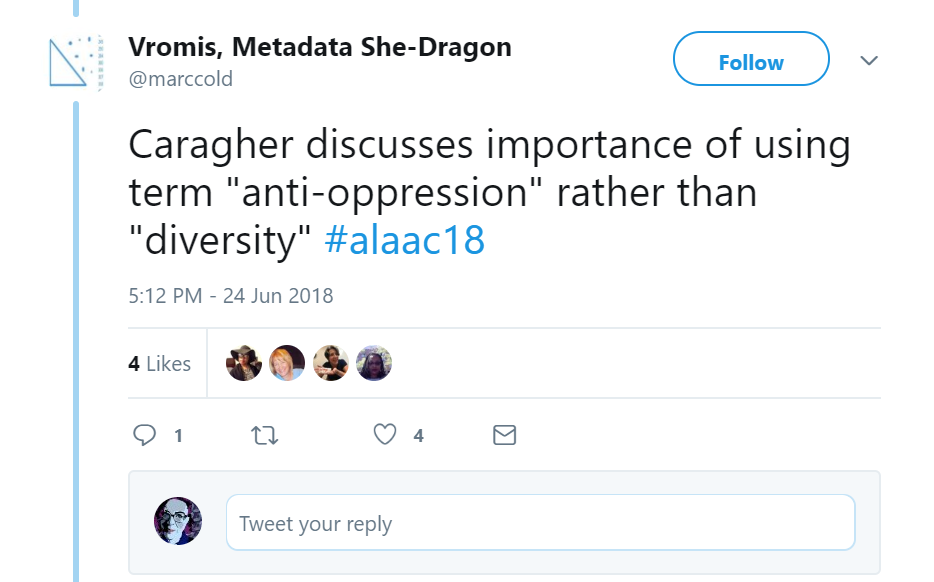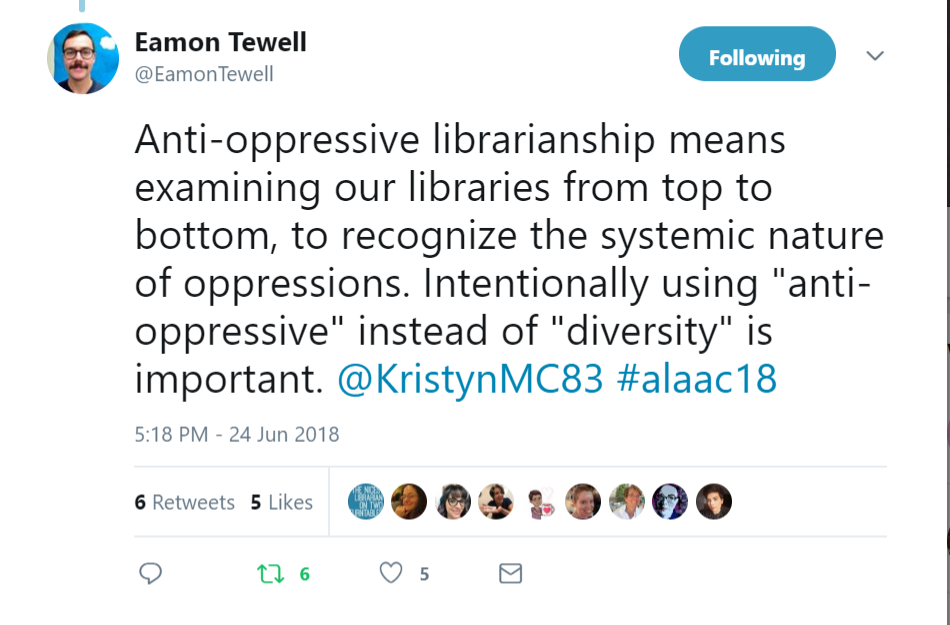https://twitter.com/DonnaLanclos/status/1011631269720023040
I’m intrigued that there is an entire conference for Interlibrary Lending. I asked Nigel Buckley, who was kind enough to invite me (and who could not be present on the actual day of the Forum for Interlending conference in Birmingham this year), about who goes to this event, he made the point that while the conference is organized around ILL, that all of the people in the room have other duties as a part of their job, and that very few these days do ILL full time. (I wondered in the room aloud if that were true, and found a few folks in the room who do it full-time, but it was indeed true that many had it as part of a wider set of job descriptions.)
I think that ILL is potentially a useful lens through which we can examine the role of library policy and systems in defining and limiting people’s access to particular scholarly identities. So I’d like to explore that a bit, and then end (as I usually do) with some questions. I was told, when I was invited, that the Forum for Interlending attendees were interested in more user experience discussions. What I would like to do here is move to a point where the “user” is less the point than the community of scholars among which libraries are located, and with whom library workers need to connect.
When I was an undergraduate, I was at the University of California. There are now nine campuses in that system, at the time I was there (in the late 80s/early 90s) there were eight. At the time, each campus had two different library systems. A local one, and a system-wide one. The system-wide was called Melvyl. And when you were in Melvyl, you could see what the holdings were for the entire system. I was in Santa Barbara, and I could see what books were at UCLA, UC Riverside, and also in the storage facilities called SRLF and NRLF.
I was allowed to request and borrow materials from anywhere. But I was usually advised to check the local catalog
So by the time I got to graduate school, I already had a lot of experience requesting books from other libraries. Sure, they were all in the UC system. But I knew what it felt like to need something, request it, and have it delivered.
As a graduate student I used ILL outside of the UC system, because at some point the work I needed to do, either for my coursework, or for my dissertation, required that i get things that even the library at UC Berkeley did not have. And in this I was encouraged by my advising professor, a folklorist, who was on a first-name basis with the interlibrary lending folks at the library, because he always needed something from someone else’s collections. They brought in materials from Europe, from Asia, from wherever he needed them. So again, it was visible to me what was possible, and I was never told not to request, only occasionally, that they could not get something.
[an aside: the Jitney bus was also an easy way to get from campus to campus, incidentally–a nice way of getting to other campuses if you were a starving grad student who occasionally needed to talk to people in Santa Cruz, or Davis, or somewhere relatively close by, or if you just wanted to work with their collections in person. ]
What I see of interlibrary lending in other institutions looks different to me than my experiences with it as a student and a scholar.
The University of California at the time I was attending had lots of resources. And used them for the benefit of researchers, and assumed that their students would also be doing research, and so supported them in that.
Not all institutions make that assumption.
I know, for instance of institutions that limit how many ILL books people can request.
I know of institutions that do not allow undergraduates access to ILL.
I know of institutions that put on screen how much it costs them to get ILL materials, when they are being requested by someone.
I know of institutions that charge people for ILL services.
I know of an institution that tells students there is an official limit to ILL, but who allow for more if requested. The reason there is a limit? Their LMS requires a number. The limit is built into the systems they use.
Who gets to use ILL?
What does it mean for those who don’t?
I think these are important questions,
If the option to get a book from another library isn’t very visible or obvious, either in the building or in the web environment, how does ILL being difficult to see affect what people can do, in terms of getting access to rare or unusual (or, relevant) materials?
I think here about work I did with web UX at UNC Charlotte, one of the task list items was “request a book [that we knew we did not have].” The idea was that students would request the book from ILL, that we were testing how easy it was to get from a Zero result page to “please find the book for me.”
That’s not what happened. What happened was the students said “Well, we don’t have it” and then they would go to Amazon to see if they could purchase it.
They did not know what ILL was. It was not visible to them in their everyday academic practices. Many students at my institution were only familiar with it if they were 3rd or 4th year History or English majors, and had been schooled in the wonders of ILL by their enthusiastic faculty members.
So if the people who are important to our students don’t tell them about what’s possible in the library, and they don’t have a relationship with people in the library, there’s going to be a gap between what they think is possible, and what is actually there.
I also wonder about what the impact is of some materials being available soon (especially electronically) but not immediately, in perceptions about what is and isn’t possible in the library.
The kinds of scholars who can afford to be patient with interlending are the ones who are doing work that takes a long time anyway (dissertations, theses, books, articles), not the ones who are writing essays for their modules or courses (and even long-form scholarship occasionally requires quick results).
The use and knowledge about interlending signals an engagement with the in-depth experiences of scholarship. That first-years don’t know about ILL tells you what we expect of first-years, not that they are incapable.
In considering interlibrary lending systems through the lens of user experience, we need to ask, UX and ILL for whom?
Who is the “user?”–there are internal and external systems, and scholars usually only see the latter. But the ways the former works have an impact on the work that’s done. The limits of the internal systems can be passed on in the form of policies, even if those limits are not inherent to the practices of scholarship per se.
When there is a policy in place of telling people how much it costs the institution to get an item, I would ask why? In some cases it’s to slow folks down, to make people think about the cost of scholarship. But that’s an interesting choice.
Libraries have choices in making the work they do visible, and how.
I continue to hear in library and edtech circles about the value of “seamlessness””–But the “seamless” delivery of material, regardless of how you get it, has its own cost, of invisibility and–devalued labor. I think again of the web-based work we did at UNC Charlotte, and one of the most effective ways we made the library visible was to brand the links that came up for people in Google searches, so they would know that those links they clicked on were made possible by the library. We made it less “seamless” to communicate more of the context of what was going on.
So I think that getting people to value labor has to be more than “are you willing to make us pay for it?”
Showing them the seams, inviting them in as scholars–making the work of interlibrary lending, or really any part of library labor, visible by embedding it into notion of scholarship, as it was when I was becoming a scholar. It was about relationships. It was about visibility.
I know of an institution where you get paper tokens for ILL, you need to justify your request to the department, walk it over, give it to library, and maybe you’ll hear from them.
Does this kind of process communicating value? Or make it seem inaccessible?
And why do we need to limit access to materials in this way? Should we in the library be making decisions about who “should” get access to services such as ILL?
The reasons we need to limit it are not actually to do with the requirements of scholarship.
The limitations have to do with budgets, which are political documents, which are evidence of priorities. And I am aware that no one has a limitless budget.
And yet.
The work we do trying to make “transparent” the costs of doing this kind of work to the people who need the library is a kind of passing the buck. It’s evidence that we don’t have as much power as we’d like in the current system.
ILL is so many things. It’s a system that connects libraries to each other. It is a system that makes more possible for the people who use libraries, regardless of their physical starting point. a part of the way that libraries fill in the gaps of their own collection, some libraries I know use ILL stats to inform the ways that they build their collections, the work of ILL has implications for the work of the library generally.
Donald Urquhart’s work on ILL in the UK in the 1950s and beyond came from his convictions about the roles of libraries. ILL and the ways it can be useful (and also can be a barrier) to the work that people want to do via the library is in many ways a microcosm of library work generally. Urquharts’ eighteen principles are true not just for the service he imagined, but for libraries as a whole.
Here are some of them, from his 1981 booklet “”The Principles of Librarianship.”
- “libraries are for users”
- “no library is an island.”
- “the failures of an information supply system to satisfy its users are, as a rule, not obvious”
- “information cannot be valued as a rule in monetary terms”
- “the best is the enemy of the good”
- “librarianship is an experimental science”
- “libraries can be valuable to society.”
The ways that ILL is and isn’t visible, the ways it can and cannot fix the limitations of the current financial and political climate, it is reflective of libraries overall. And we are in a precarious position, one that cannot be fixed with a new system, or a better web interface (although, sometimes those are nice too), no matter how much user experience work we do.
What might “fix it” are relationships–and the collective work that emerges from those relationships. Of embedding ourselves, those of us who work within libraries, in the larger system of academic work. Of political and labor organizing, and of dedicating our work to access, participation, and justice.
Of continuing to make libraries about more than just content delivery.


